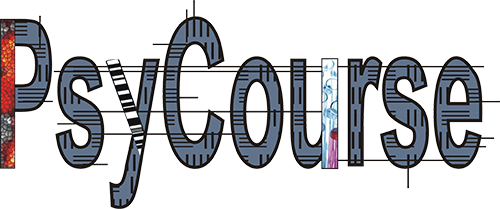2025-04-28
096_ Drugs Capable of Remyelination and Cognitive Performance in Psychosis and Affective Disorders (Amendment to 094)
Research Question and Aims
Analyzing the data of our original PsyCourse proposal entitled “Drugs Capable of Remyelination and Cognitive Performance in Psychosis and Affective Disorders”, we were able to demonstrate that psychotic patients receiving quetiapine treatment showed superior cognitive performance in two verbal memory tasks, the Digit-Span-Test Backwards (DST-B) and the Verbal Learning and Memory Test (VLMT). Both tests are assumed to proxy hippocampal memory function, a brain region, where demyelination is observed in later stages of psychotic disorders (PMID: 27460617, 31552495). Quetiapine has been shown to induce oligodendrocyte differentiation (in-vitro, PMID: 27592856) and remyelination (in-vivo, PMID: 24997607), which could be the neuropharmacological link to the observed treatment effects. These findings are so far in agreement with our hypotheses.
However, we also observe a large variability between patients suggesting the potential involvement of moderating genetic effects. Indeed, we recently could show that cell type-specific polygenic burden scores reflecting the polygenic schizophrenia risk based on variants of the top 5% genes expressed in mouse radial glia-like cells (RAD), oligodendrocyte precursor cells (OPC), and mature oligodendrocytes (OLI), could predict therapeutic effects on hippocampal volume (PMID: 31712617, 38965091). Thus, we would like to suggest evaluating potentially moderating effects of the three cell type-specific polygenic burden scores RAD, OPC, and OLI on the observed quetiapine effects on verbal memory in psychotic patients using genome-wide genetic data.
Analytic Plan
We hypothesize that the observed quetiapine effects on verbal memory are moderated by cell type-specific polygenic burden scores RAD, OPC, and OLI (PMID: 31712617, 38965091). We wish to calculate the individual burden scores of the PsyCourse patients based on the available Illumina GSA genotypes. Then, we intend to re-analyze the effects of quetiapine on cognitive function in psychotic patients by additionally including each of the three polygenic burden scores, RAD, OPC, and OLI, as main effect and interaction term, respectively. The overall schizophrenia risk score will also be calculated to benchmark our results.
Resources needed
v1_id
v1_stat
v1_center
v1_interv_date
v1_sex
v1_age
v1_yob
v1_marital_stat
v1_partner
v1_liv_aln
v1_school
v1_prof_dgr
v1_ed_status
v1_outpat_psy_trm
v1_age_1st_out_trm
v1_daypat_inpat_trm
v1_age_1st_inpat_trm
v1_dur_illness
v1_1st_ep
v1_Antidepressants
v1_Antipsychotics
v1_Mood_stabilizers
v1_Tranquilizers
v1_Other_psychiatric
v1_adv
v1_medchange
v1_lith
v1_lith_prd
v1_fam_hist
v1_height
v1_weight
v1_waist
v1_bmi
v1_scid_dsm_dx
v1_scid_dsm_dx_cat
v1_scid_age_MDE
v1_scid_no_MDE
v1_scid_age_mania
v1_scid_no_mania
v1_scid_age_hypomania
v1_scid_no_hypomania
v1_scid_ever_halls
v1_scid_ever_delus
v1_scid_ever_psyc
v1_scid_age_fst_psyc
v1_scid_yr_fst_psyc
v1_scid_evr_suic_ide
v1_scid_suic_ide
v1_suic_attmpt
v1_scid_no_suic_attmpt
v1_panss_sum_pos
v1_panss_sum_neg
v1_panss_sum_gen
v1_panss_sum_tot
v1_idsc_itm15
v1_idsc_sum
v1_ymrs_sum
v1_cgi_s
v1_gaf
v1_nrpsy_com
v1_nrpsy_lng
v1_nrpsy_mtv
v1_nrpsy_tmt_A_rt
v1_nrpsy_tmt_A_err
v1_nrpsy_tmt_B_rt
v1_nrpsy_tmt_B_err
v1_nrpsy_dgt_sp_frw
v1_nrpsy_dgt_sp_bck
v1_nrpsy_dg_sym
v1_nrpsy_mwtb
v1_med_pst_wk
v1_med_pst_sx_mths
v1_bdi2_itm19
v1_bdi2_sum
v2_age
v2_interv_date
v2_clin_ill_ep_snc_lst
v2_clin_no_ep
v2_cng_mar_stat
v2_marital_stat
v2_partner
v2_liv_aln
v2_chg_empl_stat
v2_curr_paid_empl
v2_weight
v2_waist
v2_bmi
v2_suic_ide_snc_lst_vst
v2_scid_suic_ide
v2_suic_attmpt_snc_lst_vst
v2_no_suic_attmpt
v2_Antidepressants
v2_Antipsychotics
v2_Mood_stabilizers
v2_Tranquilizers
v2_Other_psychiatric
v2_adv
v2_medchange
v2_lith
v2_lith_prd
v2_panss_sum_pos
v2_panss_sum_neg
v2_panss_sum_gen
v2_panss_sum_tot
v2_idsc_itm15
v2_idsc_sum
v2_ymrs_sum
v2_cgi_s
v2_cgi_c
v2_gaf
v2_nrpsy_com
v2_nrpsy_lng
v2_nrpsy_mtv
v2_nrpsy_vlmt_check
v2_nrpsy_vlmt_corr
v2_nrpsy_vlmt_lss_d
v2_nrpsy_vlmt_lss_t
v2_nrpsy_vlmt_rec
v2_nrpsy_tmt_A_rt
v2_nrpsy_tmt_A_err
v2_nrpsy_tmt_B_rt
v2_nrpsy_tmt_B_err
v2_nrpsy_dgt_sp_frw
v2_nrpsy_dgt_sp_bck
v2_nrpsy_dg_sym
v2_med_pst_wk
v2_med_pst_sx_mths
v2_bdi2_itm19
v2_bdi2_sum
v3_age
v3_interv_date
v3_clin_ill_ep_snc_lst
v3_clin_no_ep
v3_cng_mar_stat
v3_marital_stat
v3_partner
v3_liv_aln
v3_chg_empl_stat
v3_weight
v3_bmi
v3_waist
v3_suic_ide_snc_lst_vst
v3_scid_suic_ide
v3_suic_attmpt_snc_lst_vst
v3_Antidepressants
v3_Antipsychotics
v3_Mood_stabilizers
v3_Tranquilizers
v3_Other_psychiatric
v3_adv
v3_medchange
v3_lith
v3_lith_prd
v3_panss_sum_pos
v3_panss_sum_neg
v3_panss_sum_gen
v3_panss_sum_tot
v3_idsc_itm15
v3_idsc_sum
v3_ymrs_sum
v3_cgi_s
v3_cgi_c
v3_gaf
v3_nrpsy_com
v3_nrpsy_lng
v3_nrpsy_mtv
v3_nrpsy_vlmt_check
v3_nrpsy_vlmt_corr
v3_nrpsy_vlmt_lss_d
v3_nrpsy_vlmt_lss_t
v3_nrpsy_vlmt_rec
v3_nrpsy_tmt_A_rt
v3_nrpsy_tmt_A_err
v3_nrpsy_tmt_B_rt
v3_nrpsy_tmt_B_err
v3_nrpsy_dgt_sp_frw
v3_nrpsy_dgt_sp_bck
v3_nrpsy_dg_sym
v3_med_pst_wk
v3_med_pst_sx_mths
v3_bdi2_itm19
v3_bdi2_sum
v4_age
v4_interv_date
v4_clin_ill_ep_snc_lst
v4_clin_no_ep
v4_cng_mar_stat
v4_marital_stat
v4_partner
v4_liv_aln
v4_chg_empl_stat
v4_curr_paid_empl
v4_weight
v4_bmi
v4_waist
v4_suic_ide_snc_lst_vst
v4_scid_suic_ide
v4_suic_attmpt_snc_lst_vst
v4_no_suic_attmpt
v4_Antidepressants
v4_Antipsychotics
v4_Mood_stabilizers
v4_Tranquilizers
v4_Other_psychiatric
v4_adv
v4_medchange
v4_lith
v4_lith_prd
v4_panss_sum_pos
v4_panss_sum_neg
v4_panss_sum_gen
v4_panss_sum_tot
v4_idsc_itm15
v4_idsc_sum
v4_ymrs_sum
v4_cgi_s
v4_cgi_c
v4_gaf
v4_nrpsy_com
v4_nrpsy_lng
v4_nrpsy_mtv
v4_nrpsy_vlmt_check
v4_nrpsy_vlmt_corr
v4_nrpsy_vlmt_lss_d
v4_nrpsy_vlmt_lss_t
v4_nrpsy_vlmt_rec
v4_nrpsy_tmt_A_rt
v4_nrpsy_tmt_A_err
v4_nrpsy_tmt_B_rt
v4_nrpsy_tmt_B_err
v4_nrpsy_dgt_sp_frw
v4_nrpsy_dgt_sp_bck
v4_nrpsy_dg_sym
v4_bdi2_itm19
v4_bdi2_sum
psyc_id
gsa_id
